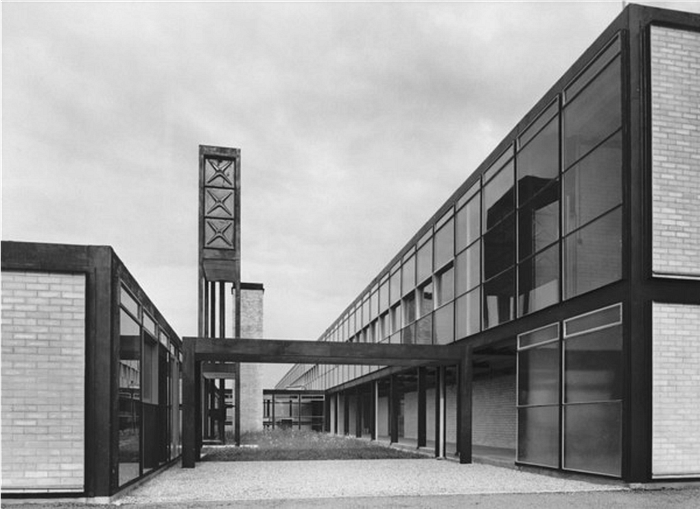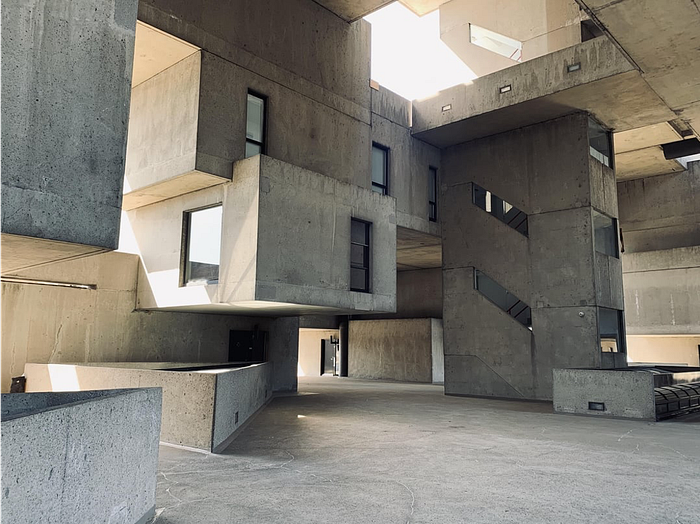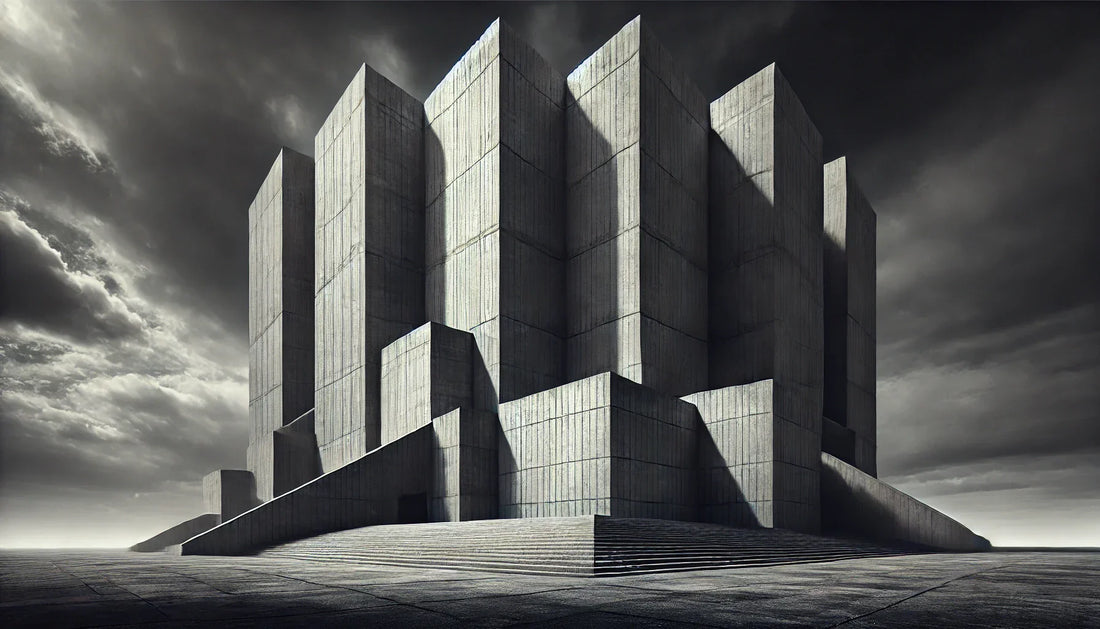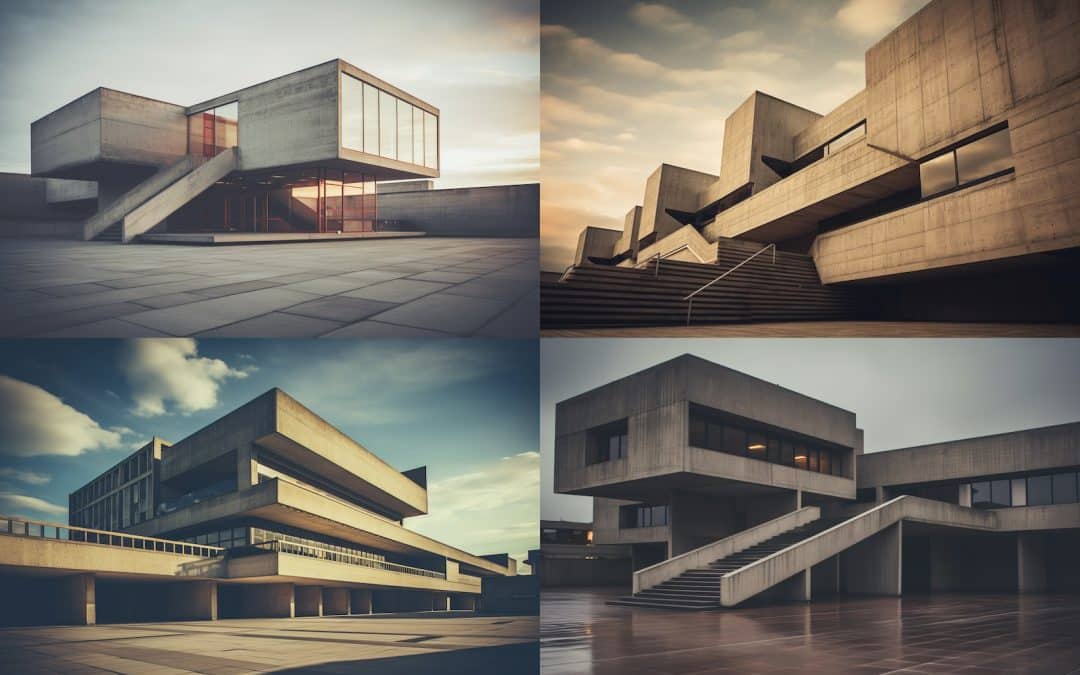Introduction: The Unlikely Combination
Brutalism, the huge, monolithic style of architecture that was popular in the middle of the 20th century, has made a surprising comeback. It came from the honest use of “béton-brut,” or raw concrete. It was a philosophy based on practicality and structural clarity. This austere style is now clashing with the most cutting-edge design technologies, such parametricism and artificial intelligence.
We call the new style “Parametric Brutalism.” It’s not a sentimental rebirth; it’s a radical new way of looking at things. It uses algorithms, data, and computational logic to make forms that are both complicated and structurally honest, paving the way for the Digital Béton-Brut. This style goes against the static, boxy shapes of its predecessor and creates a new type of architecture that is raw, colossal, and dynamically planned.
This is a thorough look at how computational design is taking the conceptual heart of Brutalism—honesty about materials and structure—and pushing it into a world of never-before-seen geometric complexity. It’s the time when the digital era finally shapes the solid mass.

Parametric Brutalism 3XN’s Waterfront Climatorium Pays Tribute to the Fishing Culture of Lemvig, Denmark. Photograph by 3XN Source: pinterest.com
A Review of The Raw Truth of Béton Brut: A Legacy
We need to look at the past to comprehend the future. After World War II, classic Brutalism came about as a way to meet the requirement for honest, efficient building methods. It stood up for an uncompromising style that included rough, unpolished surfaces, heavy, rhythmic repetition, and a huge scale.
Architects like Le Corbusier (who built the Unité d’Habitation) and the Smithsons weren’t just building things; they were making moral and political statements. The bare concrete, with the grain and texture of its wooden formwork, became a symbol of societal clarity—what you saw was what you got.
People often criticized original Brutalism for its hard, harsh shapes, which didn’t always work well with people or changing city surroundings. The building methods of the time meant that they had to use simple, extruded shapes. The shapes were honest, but they were also quite plain. The philosophy was strong, but the way it was said was limited.

image credit – www.dazeen.com
The Logic of Algorithmic Form in Parametricism
On the other hand, parametric design is all about complexity and making things different. It is a way of designing where algorithms and variables, not fixed, static lines, define geometry. Designers can modify a single number in tools like Grasshopper for Rhino to control huge, complex systems of surfaces, patterns, and structures.
Many companies, like Zaha Hadid Architects, support parametricism, which is all about fluid, non-standard, and highly optimized shapes. The goal is to build structures that can intelligently respond to their surroundings, structural pressures, and programming needs.
Brutalism used the simplicity of poured concrete, but Parametricism uses the complexity that computers can handle. The revolutionary potential is right here, in this foundation that seems to be at odds with itself.
Parametricism in Brutalism Source: palimpsest-group.com
The Convergence: Making the Digital Béton-Brut Possible
The basic idea behind Parametric Brutalism is that architects may stay true to the idea of structural and material honesty while getting around the geometric limits of the past with the help of computers.
The computer doesn’t hide things; it figures them out. It shows the structural forces that are acting on a building and makes an optimum shape that fits them perfectly. This creates an architecture where the shape is a direct, clear, and honest result of the physical and digital forces that are at work—this is a true Digital Béton-Brut.

Hunstanton School
Complexity That Is Out In The Open
In traditional Brutalism, the exposed concrete showed the lines of formwork that were used to build it. In Parametric Brutalism, the visible concrete shows how the calculations were done. Computational design makes it possible to create huge, complicated shapes like curved, ribbed, or woven surfaces that are structurally sound because an algorithm determines the size and placement of each part. The outcome is a huge shape that looks too complicated to be real, but every surface texture and exposed joint is the result of optimized computer logic.

Habitat 67
A New Look at Material Honesty
The raw material is still concrete, but how it is used changes. Architects can make textures and articulations that show the digital grain of the design process with parametric formwork that can be CNC-milled or 3D-printed. The structure is not just revealed, but it is also computationally perfect—something that Le Corbusier could only dream of doing by hand.
AI-Driven Geometry: More Than What Humans Can Do
Adding Artificial Intelligence, especially through Generative Design, takes this movement to the next level. AI systems can go through thousands of design iterations that meet a brutalist set of rules: maximum use of exposed concrete, structural efficiency, minimal material waste, and monumental expressiveness.
Architects can use generative technologies to set limits like load routes, daylighting needs, and certain site circumstances, and then get hundreds of alternative forms back. The AI-selected final form is one that is structurally hyper-efficient and frequently geometrically non-intuitive. This means that the structure is functionally and materially honest in a way that a human could never figure out on their own.
This is where the moniker “Computational Brutalism” really comes from. It’s not about copying a style; it’s about using the brutalist concept of the strict search for structural and material truth to create new, complex, and beautiful forms. The AI shapes the digital mold, and the concrete fills it in.

Source: theaipromptshop.com
Future Outlook: The Next Wave of Big Things
Parametric Brutalism is not only a passing trend; it is a sign of a more advanced level in computational architecture. It shows that the same tools that can make smooth, flowing shapes can also make big, hefty, and deep buildings. Architects can finally combine the moral and aesthetic power of béton brut with the smart complexity of the 21st century by using AI.
Buildings in the cities of the future will be honest not because they are simple, but because their well planned structure is so obviously intricate. These buildings will be modern monuments: big, honest, and always changing because of the algorithm’s unseen hand.
Reference
What Is A Brutalist Building at Emma Acevedo blog
AI and the Renaissance of Parametric Design – Architizer Journal
For more blogs like this CLICK HERE!!





